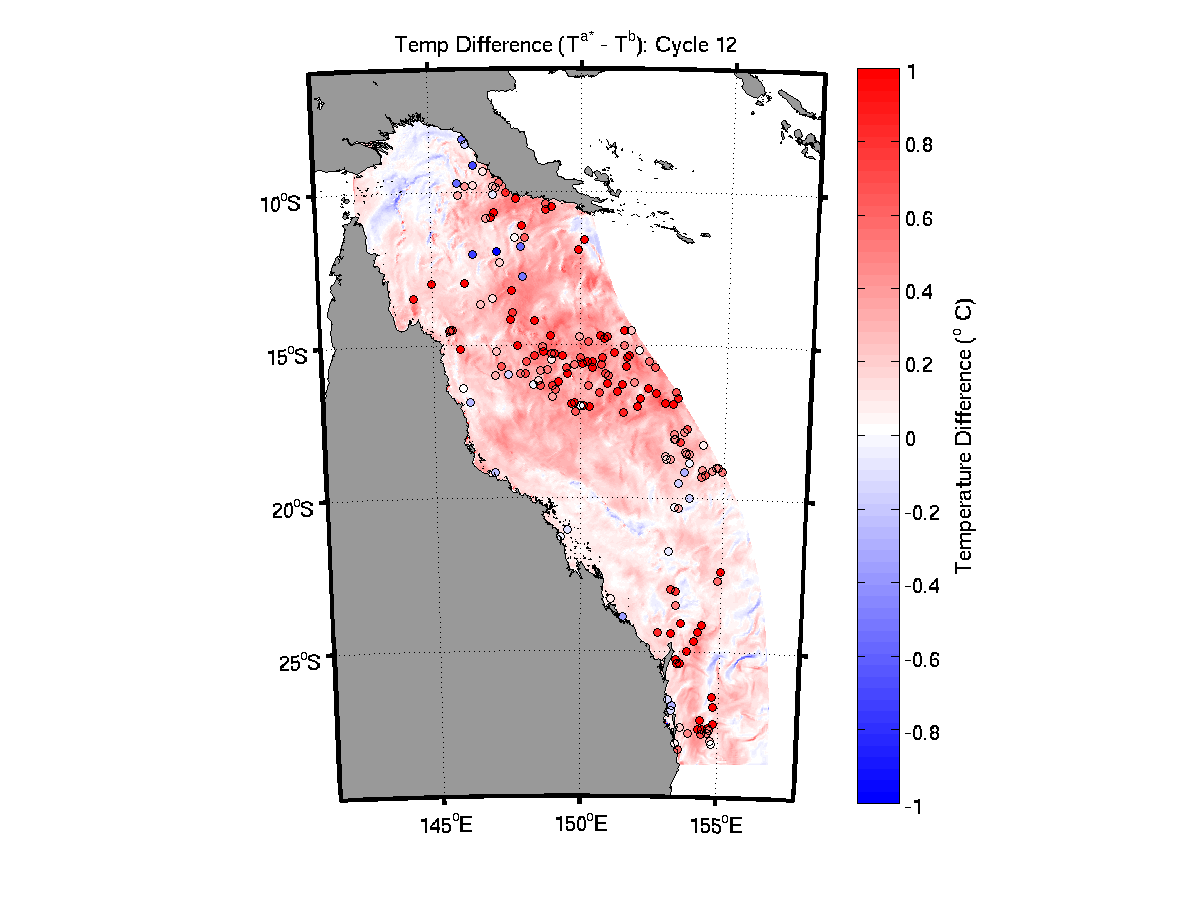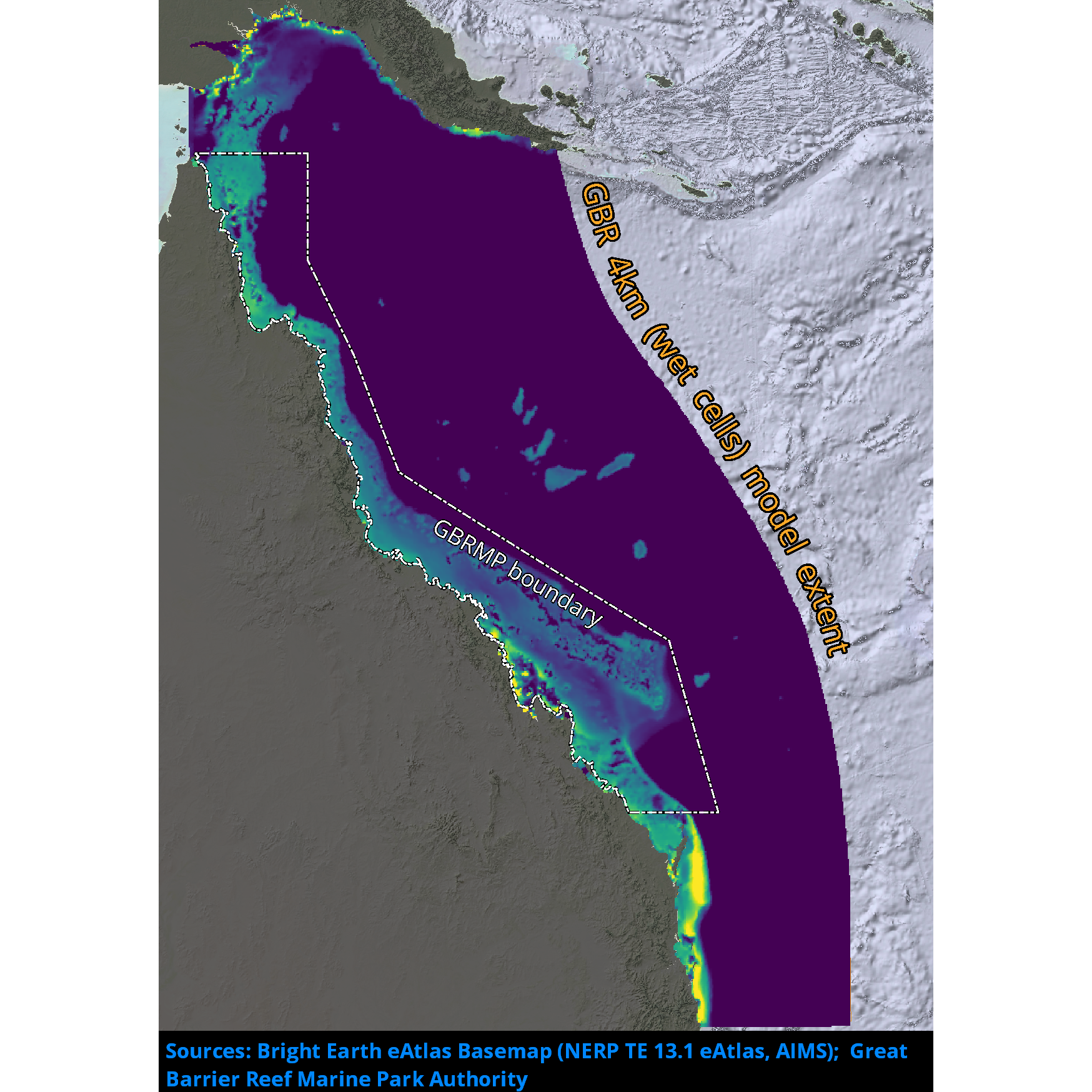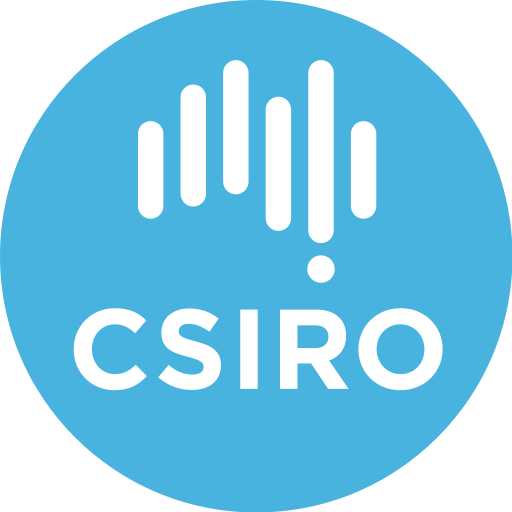Contact for the resource
CSIRO Coastal Environmental Modelling Team
24 record(s)
Type of resources
Topics
Keywords
Contact for the resource
Provided by
Formats
Update frequencies
Status
draft
-

**This sample dataset was decomissioned in May 2022, and is no longer available via the NCI THREDDS server. Please contact the eReefs team if you need access to this data.** This is the eReefs GBR 4 km resolution Data Assimilating (DA) hydrodynamic SHOC model data. The Ensemble Optimal Interpolation (EnOI) system assimilaties a combination of temperature data from moorings (AIMS and GBROOS/IMOS), gliders (CSIRO and IMOS) and SST (GHRSST L3S from IMOS). This product is the first version of a reanalysis undertaken for the GBR4 grid. The DS system is run with a cycle length of 2 days, and assimilates temperature data that fall within a 6 hour window either side of the analysis time. The mean forecast error ranges from 0.4 degrees C in the "dry" season to 0.7 degrees C in the "wet" season
-

**This sample dataset was decomissioned in May 2022, and is no longer available via the NCI THREDDS server. Please contact the eReefs team if you need access to this data.** This is the eReefs GBR 4 km resolution complete hydrodynamic Sparse Hydrodynamic Ocean Code (SHOC) model data v1.85. It is comprised of ALL the tracers that are present in the SHOC model. The output format is non-CF compliant as it is a "standard" SHOC ALL file. It is based on the Arakawa-C grid with velocities on face centres that are oriented relative to the grid while all tracer values and surface elevation values are cell centred.
-

This dataset has been superseeded by GBR4_H2p0 (2010-09 to present) and it was removed from the NCI fx3 project and THREDDS server in April 2024. An archive copy has been retained by the custodians, and access can be arranged on request. Results from version 1.85 of the 4 km resolution regional-scale hydrodynamic model of the great Barrier Reef (GBR4). It was forced with BlueLink OceanMAPS data on the open boundaries and Bureau of Meteorology model ACCESS-R for surface atmospheric data. The tide was introduced through 22 constituents derived from the global CSR tide model, and 22 river boundaries incorporated measured stream flow and temperature data from QLD DNRM's gauging stations. This model version was published for reference in the SIEF report from January 2016, but was later discovered to have been forced with incorrect (multiplicative error) rainfall levels, and the 2015 results contain salinity errors. This model configuration and associated results dataset may be referred to as "GBR4_H1p85" according to the eReefs simulation naming protocol.
-

SUPERSEDED: This dataset has been superseeded by GBR4_H2p0_B2p0_Chyd_Dcrt(2010-12 to 2016-10) and then by GBR4_H2p0_B3p1_Cq3b_Dhnd (2010-04 to 2019-04) and it was removed from the NCI fx3 project and THREDDS server in April 2024. An archive copy has been retained by the custodians, and access can be arranged on request. This is the eReefs GBR 4 km resolution Biogeochemistry (BGC) and Sediments model data version 926. It is based on the eReefs GBR 4 km Hydrodynamic SHOC model data for physical properties plus a sediment transport model for predicting the fate of suspended fine sediments and a biogeochemical model for water column and benthic production, water quality and nutrient cycling. It includes a spectrally resolved light model and is forced by a wave model to calculate resuspension rates of particulate matter
-

Results from version 3.1 of the 4km-resolution biogeochemistry and sediments model of the Great Barrier Reef (GBR4), forced by version 2.0 of the 4km-resolution hydrodynamic model and by a baseline catchment scenario which is derived from P2R SOURCE Catchments with 2019 catchment condition from December 1, 2010 to June 30, 2018 and from empirical SOURCE Catchments with 2019 catchment condition from July 1, 2018 to April 30, 2019. This model configuration and associated results dataset may be referred to as "GBR4_H2p0_B3p1_Cq3b_Dhnd" according to the eReefs biogeochemical simulation naming protocol. The model ran in hindcast-mode as one of a suite of simulations which included pre-industrial (GBR4_H2p0_B3p1_Cq3p_Dhnd) and reduced-load (GBR4_H2p0_B3p1_Cq3R_Dhnd) catchment scenarios.
-

Results from version 3.1 of the 4km-resolution regional-scale biogeochemistry and sediments model of the Great Barrier Reef (GBR), forced by version 2.0 of the 4km-resolution hydrodynamic model and with catchment forcing from P2R SOURCE Catchments with pre-industrial catchment condition from December 01, 2018 to June 30, 2018 and then Empirical SOURCE Catchments with pre-industrial catchment condition from July 1, 2018 to April 30, 2019. This model configuration and associated results dataset may be referred to as "GBR4_H2p0_B3p1_Cq3p_Dhnd" according to the eReefs biogeochemical simulation naming protocol. The model ran in hindcast-mode as one of a suite of simulations which included baseline (GBR4_H2p0_B3p1_Cq3b_Dhnd) and reduced-load (GBR4_H2p0_B3p1_Cq3R_Dhnd) catchment scenarios.
-

Results from version 3.1 of the the 4km-resolution biogeochemistry and sediments model of the Great Barrier Reef (GBR4), forced by version2 of the Hydrodynamic model and by a reduced-loads catchment scenario which is derived from SOURCE Catchments with 2019 catchment condition (q3b) with anthropogenic loads (q3b – q3p) reduced according to the percentage reductions of DIN, PN, PP and TSS specified in the Reef 2050 Water Quality Improvement Plan (WQIP) 2017-2022 as calculated in Brodie et al., (2017). Further, the reductions are adjusted to account for the cumulative reductions already achieved between 2014 and 2019 that will be reflected in the 2019 catchment condition used in q3b. This model configuration and associated results dataset may be referred to as "GBR4_H2p0_B3p1_Cq3R_Dhnd" according to the eReefs biogeochemical simulation naming protocol. The model ran in hindcast-mode as one of a suite of simulations which included baseline (GBR4_H2p0_B3p1_Cq3b_Dhnd) and pre-industrial (GBR4_H2p0_B3p1_Cq3p_Dhnd) catchment scenarios.
-
DEPRECATED: This dataset has been superseded by GBR1_H2p0_B3p2_Cfur_Dnrt Results from an early version of the 1km-resolution shelf-scale biogeochemical model of the Great Barrier Reef (GBR1). This version of the model was forced by version 1.85 of the eReefs GBR 1 km resolution hydrodynamic model, and made several improvements to the v926 (B1p0) model for: more accurate optical calculations; Normanby – particulate and dissolved loads corrected; Sediment tracer “Dust” added; Oxygen mass conservation part of diagnostics. This model configuration and associated results dataset may also be referred to as "GBR4_H1p71_B1p9_Cfur_Dnrt" according to the eReefs simulation naming protocol, but that protocol was not codified until after this dataset was superseeded, so it is usually referred to by the v924 identifier.
-
This dataset has been superseded by GBR4_H2p0_B3p1_Cq3b_Dhnd (2010-12 to 2019-04), and it was removed from the NCI fx3 project and THREDDS server in April 2024. An archive copy has been retained by the custodians, and access can be arranged on request. 4km-resolution Biogeochemical model version 3.0, forced by version 2 of the Hydrodynamic model and `best available forcing`¹, deployed as `catchment real time` (6 month lag for SOURCE Catchments model). ¹ best available forcing: ○ 2011-06-30 to 2014-06-30: P2R SOURCE Catchments; ○ 2014-07-01 to 2016-10-30: Empirical SOURCE Catchments; ○ 2016-10-31 onwards: Furnas relationships for wet and dry tropics rivers.
-
SUPERSEDED: This dataset has been superseeded by GBR4_H2p0_B3p1_Cq3p_Dhnd (2010-12 to 2019-04) and it was removed from the NCI fx3 project and THREDDS server in April 2024. An archive copy has been retained by the custodians, and access can be arranged on request. 4km-resolution Biogeochemical model version 3.0, forced by version 2.0 of the Hydrodynamic model and by SOURCE Catchments with pre-industrial catchment cover, deployed as `catchment real time` (6 month lag for SOURCE Catchments model).
